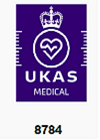Blood Bank
Introduction
- Created on .
- Last updated on .
Written by Craig Webster on .

Written by Craig Webster on .
Poorly venepunctured blood samples can dramatically affect the results of a test. Some of the more common errors are listed below:
Written by Craig Webster on .
For any clinical advice regarding blood products/transfusion, please contact the on-call Consultant Haematologist/Specialist Registrar through Switchboard.
For advice on interpretation of results or reports please contact Blood Bank in the first instance however we may recommend that you speak to a Consultant/Registrar if the enquiry is of a clinical nature.
Blood Bank Telephone Numbers:
Written by Craig Webster on .
Read more: Test Repertoire (Blood Bank)
Written by Craig Webster on .
Written by Craig Webster on .
If a transfusion reaction is suspected, stop the transfusion immediately. Follow the trust protocol (internal users only) and inform blood bank. All units which have been used (partially and fully) must be returned to the blood bank along with:
Read more: Transfusion Reactions
Written by Mark Hill on .
With effect from 1st September 2016, Blood Bank are introducing the two sample rule for requests for blood and blood components (blood, fresh frozen plasma, cryoprecipitate, platelets, granulocytes).
What is the two sample rule?
Blood Bank need to ensure that there are two distinct samples from a patient that have generated the same blood group from both samples. If Blood Bank have seen the patient before and already have a historic blood group (after 20thOctober 2015) then you only need to make a request for group and save or X-match as you normally do. If the patient has no previous records in Blood Bank then you MUST repeat the group and save or X-match with a second sample.
Why is this rule being introduced?
Wrong blood in tube (WBIT) is a 'never event', it should not happen, however on occasions it does. The consequences of transfusing somebody with blood of the incorrect blood group is very serious and can lead to death. WBIT is a SHOT (Serious Hazards of Transfusion) reportable incident. The two sample rule is a national guideline to improve patient safety when receiving transfusions.
How does the two sample rule work?
If the patient is not known to Blood Bank then the two sample rule is invoked. The two samples must come from separate venepuncture events and ideally should be carried out by two different people. Separate request forms should be completed for each sample. It is NOT acceptable to take two samples at one venepuncture event and send them to Blood Bank on separate request forms. This will not negate the possibility of WBIT. There is no limit on the time between samples as long as Blood Bank have a historic blood group on record after 20th October 2015.
How will I know if a second sample is required?
If you are unsure if Blood Bank already have a historic blood group you can check iCare or ICE for requests after 20thOctober 2015. If you are still unsure then please telephone Blood Bank on 40706 (BHH), 47279 (GHH) or 44527 (Sol).
What happens in an emergency situation?
If blood is required in an emergency eg massive bleed procedure invoked, the two sample rule will not apply however a second sample should be sent as soon as possible. Blood will be issued as per the massive bleed procedure and will not be delayed.
For more information and reports relating to transfusion safety please visit www.shotuk.org
Written by Craig Webster on .
It is essential that blood and blood products are stored correctly to minimise any adverse incidents from occurring:
Avoidable wastage of blood and blood products will generate a 'Wastage Report' for the ward to complete and return to Blood Bank. This is monitored by the Hospital Transfusion Committee.
Read more: Storage of Blood Products and Wastage